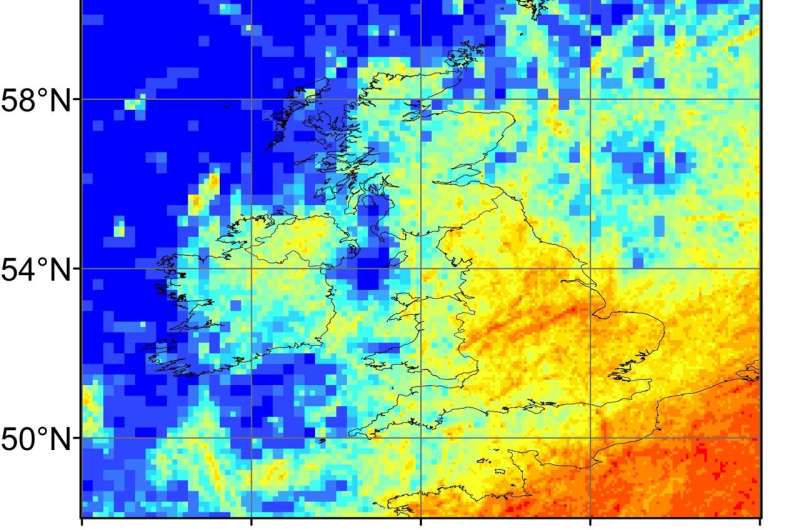Major map of lightning strikes produced

A comprehensive map of lightning strikes on the UK and Ireland over the last 12 years has been produced by experts at the University of Portsmouth to help weather forecasters, local councils and members of the public to better prepare for extreme weather.
The study combines three different lightning location systems to take a regional approach to analyzing lightning distribution in the British Isles.
Leah Hayward from the University's School of the Environment, Geography and Geosciences is the lead author. She says that "the overall driver of this research was to combine three different technologies to allow us to produce a more detailed picture of when and where lightning occurs most. Using multiple datasets has the advantage of allowing us to identify occasions where there is more uncertainty which is represented by larger differences in spatial or temporal distribution between the datasets."
Miss Hayward hopes the lightning map will help lessen risk when people are faced with extreme weather. She says that "in some circumstances thunderstorms can be difficult to forecast, but if you have some awareness of when the risk is greatest you can anticipate this and make a plan. For example, if you're heading out on a mountain expedition and you know the highest risk time of day for your region, you can avoid being on the peak or a ridge and hopefully have descended before this time. It's common sense really, but we hope this new research will arm people with stronger data and information than ever before."
"Thunderstorms can also produce intense bursts of rainfall which can result in flash flooding, especially in urban areas, and this type of hazard can be really expensive in both monetary and human terms. If councils are prepared for regional variations in the time of year this type of weather is likely to occur, they can make sure for example that all the drains are clear to reduce the danger and also implement contingency plans for rail and road users."
The researchers separated the data into seven geographical regions and found that different areas have contrasting summer thunderstorm seasons. Inland parts of the south-east of England tend to see more lightning flashes from April to August, whereas in southern England coastal regions the highest lightning flash density occurs from May to July.
One interesting finding was that in Scotland, north-west facing coastlines have a second, smaller peak in lightning and thunderstorm activity in the winter.
Hayward says that they "tend to think of lighting and thunderstorms happening over the summer, but combining the datasets showed this isn't solely the case. We also found that lightning is more likely to strike in the afternoon in inland areas of the south of England, but in coastal regions it also peaks in the early morning or overnight."
"This study shows there is important work still to be done investigating the variation in thunderstorm activity in the UK and Ireland, despite these areas experiencing a relatively low level of lightning and thunderstorm activity in comparison with mainland Europe and other parts of the world."
The paper is published in the International Journal of Climatology.
More information: Leah Hayward et al, A regional lightning climatology of the UK and Ireland and sensitivity to alternative detection networks, International Journal of Climatology (2022). DOI: 10.1002/joc.7680
Provided by University of Portsmouth



















